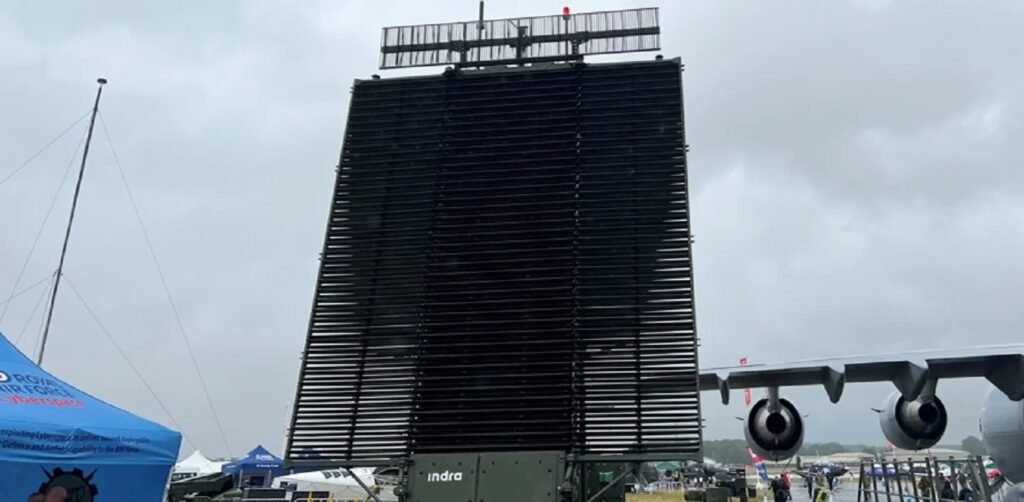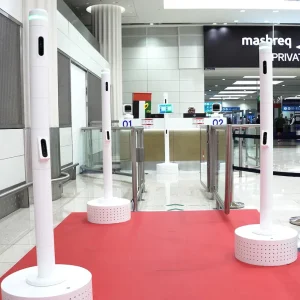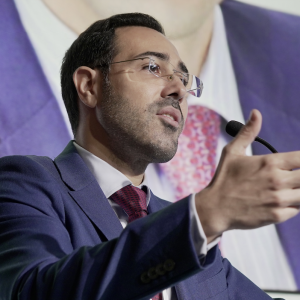In a significant step toward bolstering the Sultanate of Oman’s air defense capabilities, Indra, a global technology and defense firm headquartered in Spain, has announced its partnership with the Royal Air Force of Oman (RAFO) to supply state-of-the-art Lanza 3D long-range radar systems. This strategic collaboration highlights Oman’s ongoing efforts to enhance its surveillance infrastructure, regional defense readiness, and technological advancement in line with global security standards.
The agreement not only symbolizes a growing defense relationship between Spain and Oman but also underscores Indra’s reputation as a global leader in radar technologies. With rising geopolitical tensions and increasing focus on airspace security in the Gulf region, the deployment of Indra’s advanced Lanza radar systems is a major leap forward for Oman’s defense architecture.
A Technological Edge: What the Lanza 3D Radars Bring to the Table
The Lanza 3D long-range radar system is one of Indra’s flagship defense technologies. Designed to detect and track a wide range of aerial threats—including aircraft, drones, and ballistic missiles—across extensive distances and altitudes, these radar systems are already deployed by several NATO countries and have been battle-tested in a variety of environments.

Key capabilities of the Lanza 3D include:
- Extended Detection Range: The radar system can detect targets at distances exceeding 400 kilometers, offering Oman a comprehensive aerial surveillance solution.
- High-Resolution 3D Tracking: It provides accurate three-dimensional tracking, covering altitude, direction, and range.
- Early Warning: The system is capable of offering early threat detection, essential for rapid response and airspace control.
- Resilience in Harsh Conditions: Engineered to withstand extreme weather and geographical conditions, the Lanza radar is ideal for Oman’s diverse landscape, which includes deserts, mountains, and coastal zones.
- Interoperability: Fully compliant with NATO standards, the system can integrate seamlessly into multinational defense networks, supporting joint operations and intelligence sharing.
The deployment of these radars is expected to significantly strengthen Oman’s situational awareness and defense capabilities, especially at a time when the Gulf region is witnessing increasing air traffic, both civilian and military, and a growing risk from unmanned aerial threats.

Strategic Importance of the Deal
This radar acquisition is more than just a technological upgrade; it is a calculated geopolitical move. Located at the crossroads of Asia and the Middle East, Oman holds immense strategic value. It shares maritime boundaries with some of the world’s busiest shipping lanes, particularly in the Strait of Hormuz—a critical chokepoint for global oil trade.
Given its position, Oman’s ability to monitor its airspace and detect potential threats early is of paramount importance, not just for its national security but for regional stability. The Lanza 3D system will allow Oman to maintain full airspace surveillance, contributing to deterrence and defense efforts amid broader Gulf security concerns.
Oman’s Defense Modernization Vision
The RAFO’s move to integrate Indra’s radar technology aligns with Oman’s broader military modernization agenda. In recent years, Oman has invested heavily in upgrading its defense systems, acquiring new aircraft, enhancing cyber defense, and developing electronic warfare capabilities. The goal is to build a more agile, self-reliant, and technologically sophisticated armed force.
This radar acquisition is a milestone in that journey. By incorporating high-end surveillance technologies, Oman ensures that its military forces have access to real-time data and intelligence, enabling quicker decision-making and effective threat response.
Furthermore, Oman’s defense partnerships have increasingly diversified, reaching beyond traditional allies like the UK and the US. Spain, through Indra, now emerges as a valuable defense partner, opening doors for future cooperation in training, maintenance, and knowledge sharing.
Indra’s Global Impact and Middle East Expansion
Indra’s collaboration with Oman is part of its broader strategy to expand its footprint in the Middle East, a region that continues to prioritize defense spending amidst complex security dynamics. The Spanish firm has a strong track record of supplying radar and electronic defense solutions to both NATO allies and non-NATO countries. It also participates in the development of Europe’s next-generation air defense initiatives.
For Indra, this contract further validates the Lanza 3D’s operational credibility and technological edge. The company’s radar systems are currently in use in over 40 countries, covering military, civil aviation, and space applications. Its expertise in digital defense transformation, AI-based surveillance, and command-and-control systems makes it a formidable player in the global defense industry.
The partnership with Oman also lays the groundwork for regional visibility and potential new contracts with other Gulf Cooperation Council (GCC) countries seeking modern radar capabilities.
Training and Technology Transfer
As part of the deal, Indra is expected to provide comprehensive training programs to Omani personnel to operate and maintain the radar systems. This ensures long-term sustainability and capacity-building within Oman’s defense forces.
Such programs often go beyond technical know-how, fostering collaboration in operational planning, logistics, and cybersecurity. The agreement is also likely to include local maintenance support, which could open pathways for defense technology transfer and joint ventures in the future—an important step in Oman’s goal to develop indigenous defense capabilities.
A Boost for Regional Stability
In a region where airspace violations, drone incursions, and missile threats have become common, Oman’s radar upgrade enhances its ability to contribute to broader regional defense efforts. While Oman traditionally adopts a neutral and diplomatic stance in regional politics, its ability to secure its borders and airspace independently strengthens its voice in regional affairs.
It also indirectly supports coalition efforts to maintain peace in volatile areas like Yemen and the Gulf of Aden, where air surveillance and intelligence are crucial to counter-terrorism and humanitarian operations.
Future Outlook
With the induction of Lanza 3D radars, Oman is entering a new era of high-precision surveillance and threat detection. This deal represents a confluence of technological ambition, strategic foresight, and international defense cooperation.
Looking ahead, Oman may continue investing in integrated defense ecosystems, combining radar, drone detection, satellite intelligence, and cyber defense—all of which align with the broader vision of a smart, tech-savvy military force. Indra’s role in this journey could grow beyond radars, potentially encompassing simulation systems, electronic warfare, and secure communications.
For now, the successful implementation of the Lanza 3D system will be closely watched—not just as a national success story, but as a model for other nations seeking to enhance their defense posture through global partnerships and cutting-edge technologies.
Do follow Uae stories for more Updates
Oman: The Silent Diplomat at the Center of Critical Iran-US Nuclear Talks














